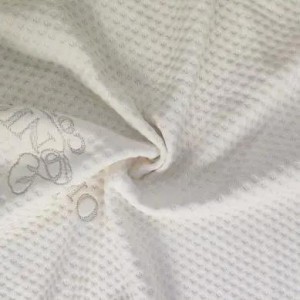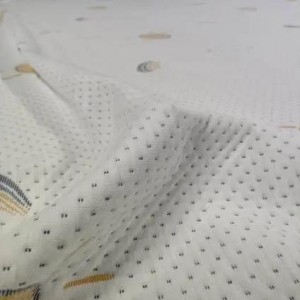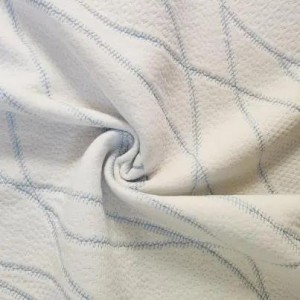Bed should be a place to unwind and relax at night, but struggling with allergies and asthma are often associated with poorer sleep and lack of a good night's sleep. However, we can minimize the allergy and asthma symptoms at night and finally sleep better.
There are various ways to minimize the triggers for allergies and asthma in your sleep environment, starting with using a hypoallergenic bedding.
We share the best bedding fabric for relieving allergies and asthma. Not only that, but we offer some simple tips to reduce the allergens in your bedroom and promote undisturbed sleep.
How to Combat Allergens in Your Bedding
1. Sleep On Hypoallergenic Mattress Fabrics
Another crucial component to keep your bed free from allergens and bacteria is to use a mattress with hypoallergenic fabric.
Hypoallergenic fabric protects your mattress from trapping sweat, dust, and other microbes, which can turn into molds and fungi. Good mattress fabrics can extend your mattress's lifespan. Tencel and cotton mattress fabrics are good choices.
2. Choose a Hypoallergenic Mattress
Hypoallergenic means the bed contains allergen-resistant materials such as memory foam, latex, or dust-resistant covers to naturally keep away microorganisms including pollen, dust, bed bugs, and dust mites. This way, the beds are safe for people with allergies and asthma to sleep on.
There are many different types of mattresses, all of which can come in hypoallergenic forms.
Memory foam beds and latex mattresses are commonly hypoallergenic and best for asthma and allergy sufferers. Both types of mattresses are dense, which leaves little space for bacteria growth. Latex beds, in particular, often feature wool as well, which is antimicrobial and a natural flame barrier, further protecting against bacteria.
3. Use High-Quality Bed Sheets
Not only is your mattress important for a clean and safe sleep environment, but your bed sheets also play an important role in your allergy and asthma symptoms at night. Allergens can get trapped in your sheets, so find bed sheets with a high thread count to leave as little space possible for microorganisms to fester.
We suggest using cotton sheets or Tencel sheets. They're cool, dust-mite resistant, and have tight weaves. It's useful to use sheets that are machine-washable and safe to clean in hot water because hot water works best for sterilization.
4. Wash Your Bed and Bedding Regularly
Keeping your bedding clean goes a long way toward preventing allergies and asthma at nighttime.
For allergy and asthma sufferers, we recommend washing your bed sheets, mattress protectors, and pillowcases weekly. Wash your comforter at least two to three times a year, or once every four to six months. Clean your pillows between two to four times a year, but this depends on what type of fill your pillow has.
Not only do you need to wash your bedding, but it's also important to wash your mattress itself. Of course, you can't just toss a mattress into a washing machine.
We recommend spot cleaning your mattress using a gentle stain remover and letting it sit for 30 to 60 minutes. Then, sprinkle baking soda over the entirety of your mattress and let it sit for another 30 to 60 minutes. Next, vacuum every side of the mattress, including its underside.
Finally, let your mattress sit under the sun to further sterilize it. Since most of us can't just take our mattresses outside, a good idea is to lay the mattress in an area of your bedroom where the sun can hit it.
Post time: Sep-01-2022







